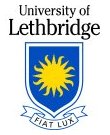Section 2 Course Description
¶Subsection 2.1 Overview
Math 2580 is the last course in our calculus sequence. It deals with the calculus of functions of several variables, including vector calculus. In Math 2570, you learned about the calculus of vector-valued functions of a single variable, which looks a lot like regular calculus, but wrapped up in vector notation. You probably also saw an introduction to functions of several variables (limits, continuity, and partial derivatives), but since coverage of these topics varies in Math 2570, we'll review them.
Calculus IV culminates in vector calculus, which is the calculus of vector-valued functions of several variables. Before we get there, we have to introduce the cast of supporting characters: curves and surfaces in \(\mathbb{R}^3\text{,}\) and integral and differential calculus in two and three variables. Most of the results in Calculus IV are analogous to the ones you're familiar with from Calculus I, although some of them will look more complicated. Where the challenge lies for many people is that since Calculus IV takes place primarily in three-dimensional space, a certain amount of spacial visualization is needed to correctly set up some problems.
Most of Calculus IV (or for that matter, calculus generally) can be understood according to the following credo: Smooth objects are locally linear. Here, “smooth” can refer to (differentiable) functions, curves, surfaces, and so on. With this point of view, a lot of calculus becomes the translation of problems in geometry and analysis (hard) into problems in linear algebra (easy, relatively speaking). While derivatives and integrals will still occupy most of our time, we'll encounter the occasional guest appearance by matrices and determinants, and of course, vectors will play a role throughout.
Subsection 2.2 List of topics
We will attempt to cover the course textbook in its entirety, following the order of topics found there. In particular, we will see the following in Math 2580:
- Surfaces in \(\mathbb{R}^3\text{.}\) Visualization via traces and level curves.
- Quadric surfaces and cylinders: equations and images.
- Functions of several variables: review of limits and continuity.
- Partial derivatives: review of basic principles.
- Differentiability: conceptulization via tangent planes, and general definition.
- Differentiability: the Jacobian matrix of partial derivatives.
- Differentiability: the function classes \(C^1\) and \(C^2\text{.}\)
- The multivariable chain rule (including an interpretation via matrix multiplication)
- Gradients and directional derivatives
- Extreme values: classifying critical points
- Extreme values: multivariable optimization (Lagrange multipliers)
- The derivative as a linear map.
- Iterated integrals: volume by cross-section.
- Riemann sums for multiplie integrals.
- Double integrals in rectangular coordinates.
- Double integrals in polar coordinates.
- Applications of double integrals.
- Triple integrals.
- Triple integrals in cylindrical and spherical coordinates.
- General change of variables in multiple integrals.
- Review of parametric curves in space.
- Vector fields.
- Line integrals.
- Fundamental Theorem of Calculus for line integrals.
- Green's Theorem.
- Parametric surfaces.
- Surface integrals.
- Divergence theorem and Stokes' theorem.
